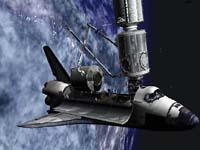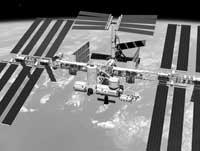Trying to control world maritime traffic
2010/07/31 Aulestiarte Lete, Izaro - Elhuyar Zientziaren Komunikazioa
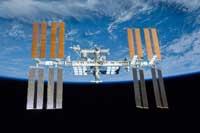
The ESA itself has announced the new experiment of the Columbus module and has added that the ISS already has the opportunity to observe maritime traffic around the world. However, the initiative is in its beginnings, those responsible for the system continue to carry out tests to analyze the viability of the project.
In short, this is a vessel detection system based on the so-called “Automatic Identification System” (AIS). And, as indicated by the ESA, it would be equivalent to the tool used in air control.
For this purpose, all international ships, both of different type and cargo and of passengers, must carry a radio transmitter known as “class A”. The AIS system will allow to identify each of them and access the navigation data of them.
This detection system allows port authorities and coastal guards to know the maritime traffic. Based on VHF radio signals, the system only has a horizontal range of 74 kilometers (40 nautical miles). Therefore, the AIS could be useful to track maritime traffic, but especially to take advantage of the coast and from one boat to another, since it could not control much of the ocean. However, members of the European Space Agency say that AIS signals can “travel” much more vertically, until they reach the “International Space Station”.
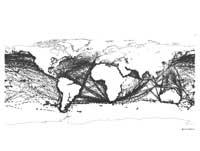
The lines of the image indicate the routes of the ships throughout the world. (Photo: FFI ) .
Global vision
The experiment was baptized as “COLAIS” (Columbus AIS) and was launched in June. The promoters of the project soon published their first data. From day to day, for fourteen hours, the new system accumulated more than 90,000 messages, “offering an overview of maritime traffic.”
The conclusions of the experiment and the data and results that the system collects through the remote control are being managed through the Oberpfaffenhofen (Germany) control center of the Columbus module.
In the coming months they plan to connect the “COLAIS” with the receiver “NORAIS” of Norway, as well as the “LUXAIS” of Luxembourg. As the members of the ESA have pointed out, “we have a clear objective of achieving greater global coverage, and for this, we will go alternating these two receivers to perform tests in the next two years.”
Moreover, the experiment will not bring much work to the astronauts of the ISS. As the managers have explained, in the event that a receiver commits a bug, the system will only ask them to perform maintenance tasks.
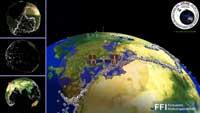
ISS rotates the Earth 15 times a day. In this illustration we can see the passage through the Mediterranean. The markings are detected containers and other buildings. (Photo: FFI ) .
The most important utility of the AIS system is to avoid collisions between containers, but it has other advantages. Among other aspects, the researchers highlighted that the scope of the AIS is much greater than that we already knew in this field (radar, radio communication, sound notifications or by image, satellite communication). They also say it's cheaper than them and offers much more information because thanks to the system it's not only possible to know that there is a container but also to identify it and know its direction or speed.
Published in Ortzadar.

Gai honi buruzko eduki gehiago
Elhuyarrek garatutako teknologia




